I don’t know how I persuaded them but they gave their permission. I was 16 years old when my parents agreed that, if I saved enough money, I could buy an Interrail card and spend a whole month of the summer school holidays travelling around Europe by train with a friend. At the time I had a job at a local supermarket where, every Friday night and all-day Saturday, I got to stack the shelves, ferret out yoghurts beyond their sell-by dates and, my favourite, sit at the checkout. And so the piggy bank gradually filled up and an Interrail pass was purchased (entitling the bearer to free rail travel across Europe). Also bought: a Thomas Cook “European Timetable” that was about the size of a phone directory (if you remember them) and which listed all the key train schedules.
Over the following weeks we covered a lot of territory. One day we were in Sweden and the next in Austria. We even made it down to the south of France. Our accommodation was a tent or a night train (we scanned the directory for ones that would allow for a decent night’s sleep). We lived off of bread and cheese. My contribution to the GDP of each country we visited was close to zero – I was a cheapskate backpacker. We were living the dream.

There is a good and much-needed debate taking place about how cities can manage tourism in a way that delivers benefits to the citizenry and doesn’t create models where the prevalence of Airbnb’s, for example, erodes the availability of affordable housing for locals to rent. This is a wise and healthy conversation to have. So why does some of the language used make me uneasy?
When you speak to politicians, activists and tourist chiefs, often their proposed solution to the problems they are facing is to get rid of the “bad tourists” and focus on the “good” ones. They talk about making more money from fewer people (day trippers are to be replaced by folk happy to stay a week in five-star accommodation), of attracting people who will spend time delving into the local culture and not just drinking cocktails on the beach all day. In this battle to reshape tourism, the 16-year-old me would today struggle to find myself on any city’s wish list of potential visitors, even if, like many a backpacker, that hurried trip gave me a passion to return to cities again and again and hand over increasing amounts of my salary.
But even the backpacker is held in higher esteem than the true scum of the earth: the mass tourist. These people are the lowest. They arrive by coach and cruise ship, they buy all-inclusive hotel deals, they drink to excess, they move in swarms and they don’t even appreciate the local handicrafts.
Before my parents dropped dead, they were rather partial to a coach-trip holiday organised by their club. Should such people really be excluded from having a holiday just because they can no longer drive? I got chatting to a retired lady at Palma airport the other day who had just been on an all-inclusive holiday and loved it – her husband had died and she wanted, she told me, somewhere that would sort everything for her. Does she need to stay at home now? I know lots of people who love a cruise – are they at fault when they step off the ship if the streets fill up? Or is the problem port-city leaders who fail to control the size or number of ships docking? When a family just wants a week at the beach, the only holiday they’ll get all year, does this really make them “bad” tourists?
Cities that struggle from over-demand should, of course, look at how they reduce the total numbers of visitors. But when you start doing this on the basis of wealth and class then you lose sympathy. Travel is a wonderful thing. Time away is an amazing privilege. Sun on our faces is restorative. Let’s not make this a freedom unavailable to nice regular folk – or smelly teenage backpackers.
I started attending fashion weeks about 10 years ago, just as brands began to stream their shows online. It was at this time that front-row regulars, – magazine editors, newspaper reporters and department-store buyers – started moonlighting as photographers and documenting their experiences on social media.
In the early days of this so-called “digital revolution” there was a real frisson of excitement around the changes that were sweeping through the industry. Were the doors of this elusive, seemingly inaccessible world finally being thrown open? It certainly created new ways for overly enthusiastic, young reporters – myself included – to gain permission to enter these rarefied spaces, all in the name of capturing content and reaching new online audiences.
But fast forward to the 2020s and everything can now be used as content: an unimaginative outfit worn to attend a show; an uninformed opinion about what’s being presented by designers; a blurry video of models walking down the runway. Content has been completely robbed of its meaning. Luxury brands have to shout louder and resort to marketing gimmicks to play the game and be heard. As for the customers watching from afar, they have become completely overwhelmed by the sheer amount of information being thrown at them.
The mainstreaming of luxury fashion has reached such an extreme, from the screaming teenagers creating security hazards outside shows to the outlandish outfits being worn on front rows for promotional purposes, that the only antidote seems to be a complete redirection: ban phones.
For starters, a phone ban would force attendees to be more present, interact with their seatmates and take in the show. It has become easy to forget that the purpose of these gatherings is about collecting inspiration, immersing yourself in a designer’s world and exchanging opinions with industry colleagues – not posting a picture on social media to prove that you were on the guest list. Having spent much of the beginning of the year at the autumn/winter 2025 men’s and women’s fashion weeks all around Europe, I have watched many fellow show-goers answer emails instead of sparing five minutes to take in what’s happening in front of them. A phone ban might be the shake-up that everyone needs to return to the real world.
It would also help to redirect attention to the collections on display rather than the famous faces in attendance, handing power to the hard-working designers who could then choose when and how they want to release their show online. As for the cities struggling to retain talent and draw international visitors to their fashion weeks – London, New York and Copenhagen among them – a move as bold as a phone ban could help them make a statement and attract global attention, more than any viral video ever could.
The brands taking a step back from the social-media furore make compelling cases for the benefits of prioritising privacy. Some of the most talked-about shows are by US label The Row, which began its phone ban at Paris Fashion Week 2024 by leaving chic notebooks on guests’ seats, encouraging them to take notes and sketch instead.
Equally, Loro Piana often hosts private customer get-togethers; access to such events is the ultimate luxury as far as the brand is concerned. Bottega Veneta, too, chose to close its Instagram account in 2021 and host more intimate evening shows. “I can’t limit my team’s creativity to a small square,” CEO Leo Rongone told me.
It’s about time that the rest of the industry follows suit, prioritising creativity once. Brands would do well to remember that the ultimate influencers are the customers shopping in-store.
It’s a homecoming party for the Eurovision Song Contest. This Saturday, the grand final of the 69th edition will be held in Switzerland, which hosted the first iteration in 1956 and won. Basel’s brasseries and bars are bustling ahead of the event, and there are rumours that Celine Dion will return to the stage (she recorded a video address played during Tuesday’s semi-final). But regardless of whether or not Dion makes an appearance, Saturday will draw a titanic crowd.
Martin Österdahl, Eurovision’s executive supervisor, is keen to point out that last year’s viewing figures surpassed those of the Super Bowl by a healthy 40 million. “Eurovision is the Super Bowl on steroids,” he told us recently. Read our full interview with Martin Österdahl here.
Sweden is the favourite to win this year’s competition; its sauna-themed entry from comedy group KAJ already has Europeans bopping. But the other contesting countries shouldn’t be underestimated. Austria, for one, is going operatic with JJ’s “Wasted Love”. As Basel gears up for the big Eurovision final, here are the five songs that you need to hear this year.
And if you’re looking for extra content, there’s been plenty more on Monocle Radio this week.
France has sent one of its biggest names in pop music, Louane, who is performing a touching ballad about her late mother.
Finland’s entry, Erika Vikman’s unapologetically sensual “Ich Komme”, is my personal favourite. Here’s our interview with the Finnish singer, who tells us exactly what she means with the title of the song.
Estonia is competing with “Espresso Macchiato”, performed by the humorous provocateur Tommy Cash. In our interview, he tells us why he decided to take part in the competition, even if it requires taming his music.
Of course, Eurovision is just as much about the stage as it is about the performers – and German production designer Florian Wieder knows a thing or two about it. Basel is his eighth Eurovision, having also worked in Malmo last year. Having Swiss roots himself, Wieder drew inspiration from the host country’s mountain landscape and linguistic diversity. We met him in Basel, where he told us what the three key design elements are for this year’s stage.
Eurovision’s delightful combination of extravagant pop and politically-charged performances offer something for everyone. Enjoy the show!
There are many ways to win an election but boring the electorate is a novel method. This Sunday, Portugal heads to the polls for its third snap election in as many years – hardly the hallmark of a healthy democracy. The latest vote follows the collapse of prime minister Luís Montenegro’s government in March, when he lost a confidence vote over a conflict-of-interest scandal: a company linked to his family, it emerged, had business ties to a government-regulated casino operator.
After three years of tireless campaigning by the main parties, the rhetoric remains woefully familiar, the slogans are well worn and the political ads could have been lifted from any of the past three elections. Understandably, voters are tuning out. They have heard it all before, recently and repeatedly. The Portuguese are tired.

That exhaustion and weariness is manifest in the polls. The latest figures show that no party is likely to win a clear majority. Montenegro’s centre-right Democratic Alliance leads on 32 per cent, with the centre-left Socialists trailing at 27 per cent. The far-right Chega party is riding a wave of anti-corruption and anti-migration sentiment, and polling at a record 19 per cent – though potential coalition partners remain conspicuously absent. Political stability, once Portugal’s calling card in a tumultuous Europe, now feels like a distant memory.
Beyond all of the parliamentary noise, however, another more positive story has been quietly unfolding. Portugal’s economy is growing at a healthy rate, outpacing the Eurozone average, thanks to record tourist numbers, strong exports and thriving technology, design and manufacturing sectors that continue to draw international attention. Creative talent continues to gravitate towards cities such as Lisbon and Porto, while the hospitality industry is breathing new life into other corners of the country.
There’s a reason why Portugal and its cities often feature highly in liveability metrics – not least Monocle’s annual Quality of Life Survey. The country’s cultural cachet, charm, heritage and balance of lifestyle and opportunity keep people coming back (or staying for good). What Portugal needs now is a government that can match that momentum – and stick around.
Rebelo is Monocle’s senior foreign correspondent. For more opinion, analysis and insight, subscribe to Monocle today.
The future of the US department store is far from clear. Household names Saks Fifth Avenue and Neiman Marcus have consolidated, triggering nationwide closures and layoffs. Still, historic French retailer Printemps – best known for its imposing location on the Boulevard Haussmann – believes that there is still potential in the US market and made a bold bet this spring, opening its first New York pied-à-terre in One Wall Street, a soaring art deco skyscraper in downtown Manhattan.
The new spot is only a fraction of the size of its Parisian flagship, yet the ambition is equally large: to turn the two-storey shop into New York’s best address for shopping, socialising and dining. Even as Donald Trump’s tariffs begin to affect the prices of luxury goods and threaten to slow down consumption, CEO Jean-Marc Bellaiche says that the company remains “deeply committed to the US market”. “We are building meaningful relationships with American clients with the goal of becoming a key player in the country’s retail landscape,” he adds.
To achieve this, Bellaiche has enlisted the expertise of designer Laura Gonzalez to transform the shop’s two floors. She created a whimsical and decadent space complete with mirrored walls, playful glass light fixtures, hand-painted frescoes and plush changing rooms, all of which has created an atmosphere that encourages escapism and indulgence. There’s even a champagne bar and a boudoir, where vintage haute-couture pieces by Jean Paul Gaultier are on display. The F&B department is helmed by French-speaking, Haitian-American chef Gregory Gourdet, who made sure that the shop offers an array of options, from fine dining at Maison Passerelle to a casual café serving French viennoiserie. Shoppers can expect items from LVMH powerhouses Dior and Louis Vuitton, as well as from more niche brands such as trunkmaker Pinel Pinel and Saison 1865, the retailer’s in-house line. There are cult French pharmacy brands too, which are nearly impossible to snap up this side of the pond and certainly a big part of the reason why customer queues have been snaking around Wall Street since the shop’s opening. “We want people to spend a full day here,” says Bellaiche. He takes Monocle on a tour of the new space.
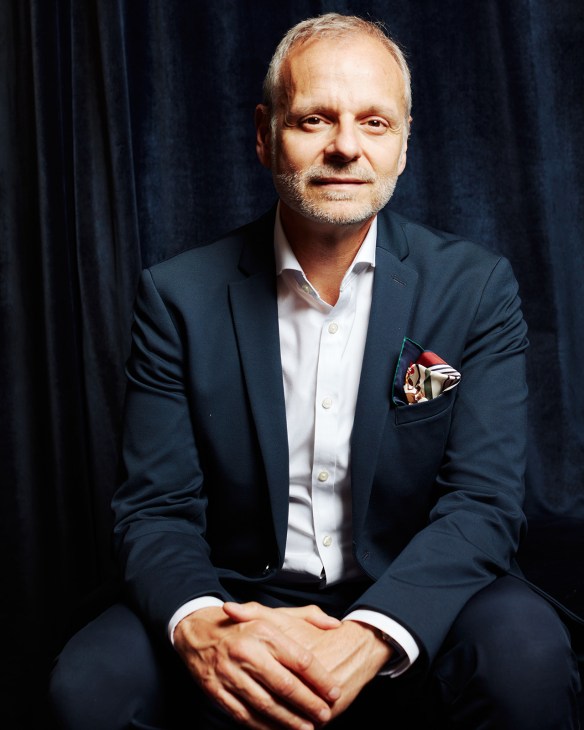
Why have you chosen to expand beyond your home market? Why the US and why now?
The US market is still under-penetrated when it comes to luxury goods. Compared to its GDP and to the number of millionaires, it’s not the number-one country in terms of luxury purchases. We know that the New York market is tough and that the city doesn’t need a new department store. But we also know that Barneys and Jeffrey have left a void in the market – a lot of my friends still reminisce about them. We intend to do something different with our concept, where French curation meets American hospitality. We’re bringing together shopping, food culture and experience – a bit like Barneys did.
Barneys might have been beloved by New Yorkers but it also closed its doors. Isn’t there a concern that if US retailers are facing these challenges, you might too?
Printemps is a smaller concept, so the risk is also smaller. Still, we must provide an outstanding experience to draw visitors. That’s why we invested so much in the architecture and the ambience, with many new fashion brands and restaurants by chef Gourdet. Sometimes it’s all about timing – and we feel that the time is right. We are convinced that retail has beautiful days ahead because we’re all social animals: we like to shop with friends, chat with salespeople and feel the quality of products in person.
How do you plan to make sure that people will keep coming through the door?
I’m convinced that the future of retail is in experience, which we do well in Europe. The food offering is strong and there is always something going on in our shops. Our visitors want to learn something and leave feeling richer – maybe not in their wallets but in what they have discovered. Storytelling is so important.
What are the differences between your American and French clients?
One difference that I’ve noticed is that the French are more independent with their tastes, while trends tend to pick up faster in the US. By bringing new brands here, we hope that they will gain traction quickly and buyers will know that they can only find [these labels] at Printemps. As for pricing, there is a difference in the sense that Americans like a good deal – that’s why there are so many outlets here. In this country, it’s important to be fair with your pricing.
Why does the US have one of the most robust markets when it comes to luxury consumption?
In the US there is more money than luxury buyers and this is coupled with a sense of optimism. The European and Chinese markets are tougher – especially in the latter, where consumer confidence has decreased. Meanwhile, Americans have maintained a positive outlook for the future, despite facing potential economic headwinds such as inflation and supply-chain issues. This attitude influences their purchasing behavior; when consumers are hopeful, they are more inclined to spend rather than save. This mindset contributes to the sustained strength of the US market, reinforcing why it remains a promising space for long-term growth.
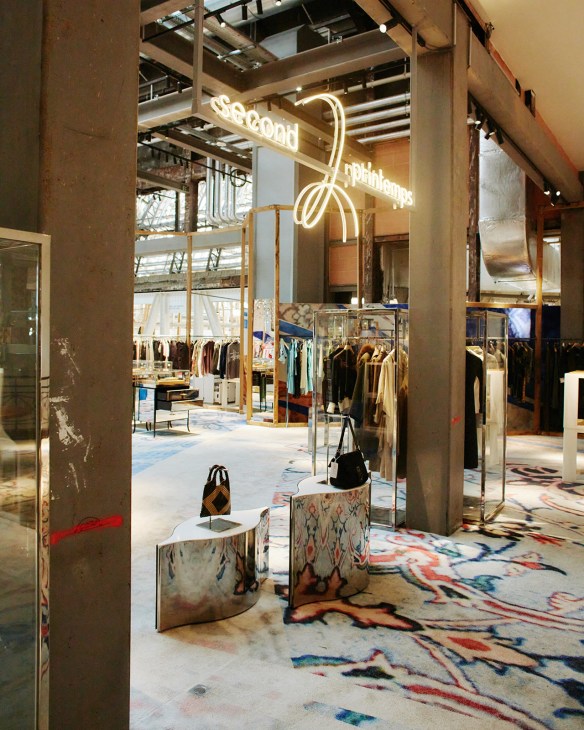
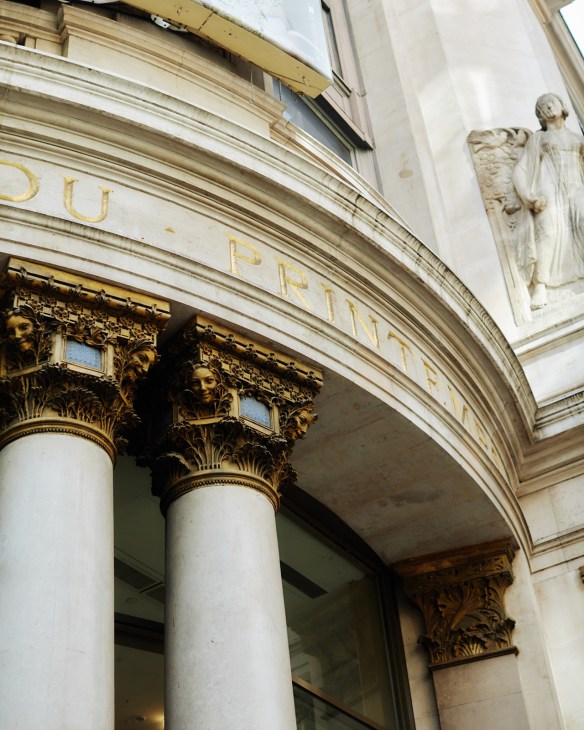
How is the brand-retailer relationship evolving?
In Paris we have very strong partnerships with various brands as it’s clear what we bring to the table. The labels themselves are very important because they provide the products and the brand value. But the multi-brand concept of a department store brings something different. We can identify VICs (very important customers) and provide a much easier one-stop shopping experience. We should continue to work in synergy with labels because although they may not be able to identify high-value clients, we know who the big spenders are.
What is your ultimate ambition for the department store?
We want this location to be highly praised. Client satisfaction will bring more brands and the more brands that want to work with us, the more we can curate what we think is the best of the best. We also want to understand the frequency of purchase and how much time a client spends with us. Once I’ve collected data on the client, I can then customise my approach. We need to deliver a business plan and there is an objective to make it work.
Europeans need to understand the US – and fast. Too many of us still think that Washington’s instinct is to defend the West, and hence that Trumpism is a passing aberration. It surely can’t be normal for Americans to hate one another so much that more than half the nation voted for a leader who gabbles about annexing countries instead of opting to be ruled by liberals. But Trumpism is an extreme reset back to the US’s default position: largely indifferent toward Europe, driven by the belief that there are far more urgent matters at home to take care of. Europeans find this hard to grasp because their entire history has made it clear that the biggest threats to their lives and freedoms comes from militarised neighbours.
To understand why things look different across the Atlantic, let’s channel John Quincy Adams, the sixth president of the US and the great-grandaddy of isolationism. Imagine that what he called “this Western World” is a different planet altogether: “planet USA”. On this planet, which was originally inhabited by a small number of easy-to-evict residents, lies everything that progress requires. M, most important of which is a complete lack of dangerous neighbours. With wealth for the taking and no one to threaten the settlers, the only real battle to be fought is among the planet’s people. Despite engaging victoriously in many major battles, the US’s civil war – the war that cost the most American lives – continues to define its politics.

During the Cold War era it seemed possible that communism could forcibly unite the world under an ideologically hostile regime. As a result, the US supported all non-communist countries. In 1990 a clique of so-called neo-conservatives in Washington hit upon a breathtaking new plan: they would beam down to any troubled land on Earth and terraform it into a simulacrum of “planet USA”. As Germany’s ex-foreign minister, Joschka Fischer, told me last year, “I was once a revolutionary myself, so I knew straight away that these weren’t conservatives – they were revolutionaries.” This revolution, like so many others, didn’t go well. As a result, Americans voted to concentrate on a far older and more existential issue: the battle for their nation’s character.
If you’re on “planet USA”, why would you worry about what Russia does in its terrestrial backyard? Russia is eager for mutually profitable deals and has a defence budget smaller than that of the UK and Germany combined. Vladimir Putin is not going to take away Republicans’ guns, raise taxes on the rich or destroy law and order with “wokeness”. Only the planet’s own, treacherous “libtards” can do that. Conversely, victory for a free Ukraine won’t save DEI programmes, women’s rights or Medicare. For that, the US Democrats must beat the screaming Magas at home.
Engaging with the rest of Earth is back to being merely an option for “planet USA”. Civil war, declared or not, is what really matters. That said, we earthlings should heed another of John Quincy’s insights: America “goes not abroad in search of monsters to destroy,” it does this at home. The US isn’t planning to save us from our own monsters (again). We have to learn to look after ourselves.
Hawes is the author of several books, including ‘The Shortest History of Germany’.
Two very different meetings are expected to take place today in two distant Turkish cities, both aimed at ending the war in Ukraine. Nato foreign ministers will meet in Antalya, while Russian and Ukrainian leaders will be sitting face to face in Istanbul for their first such encounter since the start of the war – provided Vladimir Putin shows up. Donald Trump has been pushing for the latter meeting and might even zip over from his whistle-stop tour of the Gulf to support Turkey’s president, Recep Tayyip Erdogan, with hosting duties.
This rush of Turkish-led diplomacy burnishes Erdogan’s claim that Turkey can be a key mediating power. The country has a unique position when it comes to the Ukraine conflict: as a Nato member, it officially backs Kyiv but Erdogan has also maintained a close personal relationship with Putin, evidenced by his refusal to back Western sanctions on Russia. This has allowed Turkey to sit in the middle of sensitive talks, whether on hostage swaps or Black Sea grain deals. Erdogan wants to keep Turkey as neutral as possible. In a pre-summit meeting with Mark Rutte, Nato’s secretary general, he again insisted that the military alliance should not be involved in the war.

The ousting of Bashar al-Assad in Syria has further strengthened Ankara’s hand. Turkey was a consistent backer of the political and armed opposition to Assad, and the first country to send officials to meet with the transitional government of Ahmed al-Sharaa. That makes Turkey a key link to Damascus as Western countries – including the US yesterday – begin to lift sanctions and evaluate how to deal with the new administration. Turkey has also taken part in efforts to end the resurgence of violence in Kashmir by using its diplomatic clout with Pakistan, a close ally.
As a result of all of this, Turkey is now indispensable to Europe as it tries to navigate a rapidly changing Middle East. That’s exactly how Erdogan likes things. It’s less good news for his domestic political rivals, hundreds of whom have been thrown in prison since the arrest of Istanbul mayor Ekrem Imamoglu in late March. A decade ago, such crackdowns made Erdogan a near-pariah in Western capitals. Today, autocratic concerns are brushed aside as he takes his seat at the head of the negotiating table.
Hannah Lucinda Smith is Monocle’s Istanbul correspondent. For more opinion, analysis and insight, subscribe to Monocle today.
When Lisbon experienced a 10-hour electricity blackout just over two weeks ago, rumours and conspiracy theories quickly filled the vacuum of official information. Wild speculation about the origin of the disruption spread through the streets. It was a timely reminder of how much we need reliable journalism. It also revealed a generational divide. Older people were the ones listening to their radios to hear updates from trusted voices.
Getting more young people to engage with reliable news sources is a challenge that many countries are grappling with and Portugal might have an idea worth replicating. A new government programme offers teenagers aged between 15 and 18 a free two-year digital subscription to a range of vetted media outlets. Through a government portal, they can access respected newspapers and magazines, such as national daily Público, weekly Expresso and digital newcomers such as Observador, as well as financial and business titles. The goal is to combat disinformation with media and digital literacy, and while it is a considerable public investment – an estimated €5.9m – it’s a bargain when stacked against the social and democratic costs of fake news.

The media industry puts vast amounts of effort and money into attracting younger audiences. Across the globe, we’re seeing fresh formats, with more audio, video and newsletter content to keep up with the changing times. All of that is welcome. But while it’s crucial that media organisations evolve to meet the moment, it’s also imperative that we can convey how journalism differs from social-media opinion. When I was growing up, we always had newspapers in the house and I had people around me who pointed me towards not only credible sources but to writers who made me think more deeply. That’s not the case for many young people in Portugal today, so any effort to encourage this is to be welcomed.
Governments can and should play a role in fighting misinformation and initiatives that lift financial barriers to trustworthy sources are a good start. But perhaps more of us need to embrace the influencer within: we should show young adults the benefits of critical thinking and how longer, well-researched and deeply reported reads can be more rewarding. In Finland, information literacy is taught in kindergartens. Here in Portugal, Público recently launched an online resource for students and teachers with news written in more accessible language for classroom discussion. But good journalism cannot become homework. Suggest a subscription. Share an article. Recommend a columnist. Crucially, take the time to discuss ideas. A strong media landscape is essential to countering misinformation but it’s nothing without critical thinking.
Gaia Lutz is Monocle’s Lisbon correspondent. For more opinion, analysis and insight, subscribe to Monocle today.
One of the most talked-about artworks at Singaporean boutique art fair S.E.A. Focus this year was artist Jiaqi Sheng’s lightbox piece that declared “I need to breathe shopping centre air.” It’s a sentiment that any Southeast Asian knows intimately, as shopping malls are often their go-to spot to escape the tropical heat and humidity.
While the shopping mall is an undeniable part of the region’s cityscape, the homogenous experience leaves much to be desired. There is very little separating the tenant mix across developments, where you’ll find similar fast-food chains, bubble-tea franchises, food courts and department stores. That’s why an anti-mall movement is gaining ground across Southeast Asia, where independent entrepreneurs are boldly reimagining what a lifestyle and retail space can be. Rather than build anew, they have chosen to breathe new life into old spaces, guided by a desire to preserve the city’s heritage.
Soon-Wei Ee is one such vanguard who transformed his family’s fading printing workshop, Art Printing Works, in Bangsar into a lifestyle hub. Dissatisfied with developers’ predilection for building from scratch, he believed the new space – A Place Where (APW) – could set the tone for adaptive reuse in Kuala Lumpur. “If everyone were to erect new monumental buildings, there would be no diversity in our city,” he says. “Malaysia is a young country, so these representations of who and what we are matter.”
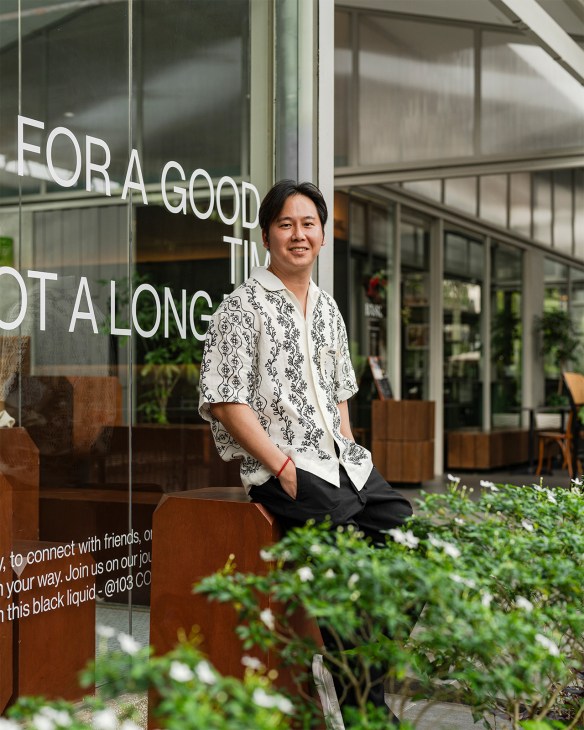
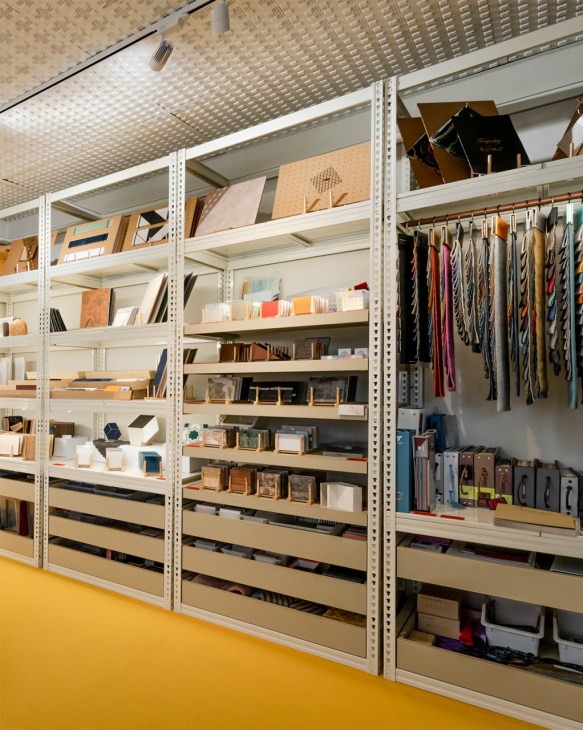

Instead of mimicking predictable shopping mall layouts, Ee, together with architecture firms Studio Bikin and Pow Ideas, blazed their trail with a mix of indoor and outdoor spaces, creating multiple discovery pathways for visitors. To mitigate urban heat, the team invested in lush landscaping and created a pocket park for guests to unwind, a sharp contrast to the hyper-stimulated mall environment.
Ee also spotted an opportunity to incubate local and regional brands. By intentionally crafting smaller shop lots, he reduced the barrier to entry for young entrepreneurs, attracting independent businesses such as halal-certified skincare brand Handmade Heroes, scent specialist Lilin+Co and fashion label Pestle & Mortar Clothing. With a roster of art exhibitions and brand pop-ups, APW soon established itself as a third space for Kuala Lumpur’s creative class. Won over by what Ee has built, American luxury label Coach also came knocking last year to establish a Coach Play concept store – an experiential retail space that includes a café and customisation studio. “They paid homage to APW’s history by creating Coach’s first ever interactive screen-printing service and co-branded merchandise,” says Ee.
APW’s success would have likely given courage to Datuk Yee Kong Fatt, managing director of Asset1 Land, who recently turned an international-high-school complex into The Campus Ampang, a sprawling community hub that fuses lifestyle offerings with fitness and wellness. Besides noteworthy local brands such as fashion label Nala, popular bakery Universal Bakehouse and specialty grocer Qra, this day-to-night destination, just outside of Kuala Lumpur, houses a running track, swimming pool and multiple ball courts, transcending a typical shopping-mall set-up.
While most developers look to the future, Yee, working with Martin Haeger from Kuala Lumpur-based architecture studio HL Architecture Sdn Bhd, drew from his schooling memories when preserving the 1960s complex to capture an unbridled youthful energy. “We kept as many of the original finishes as we could, including the pebble-stone flooring and terracotta tiles,” says Yee. “What we couldn’t [keep], we found a way to upcycle, such as salvaging glass panels from classrooms and installing them on the rooftop to channel light into communal spaces.” The team’s thoughtful approach is also reflected by Haeger’s decision to invite Lisette Scheers – who is not only Nala’s founder but also an alumna – to collaborate on the project. “Haeger recognised my connection to the space and wanted me to shape Campus Ampang’s overall look and feel,” says Scheers. “It has been a full-circle moment, bringing new life into a space that holds deep significance for many people. You can feel the shared nostalgia and collective joy when you walk through the halls.”
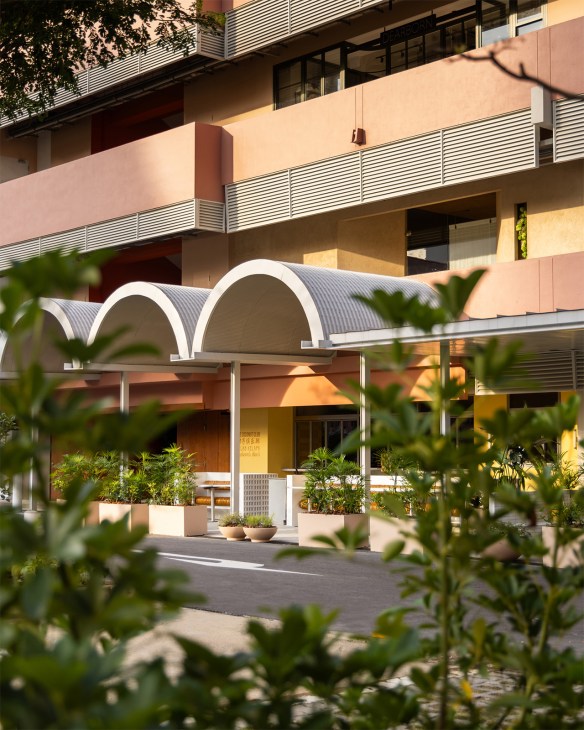

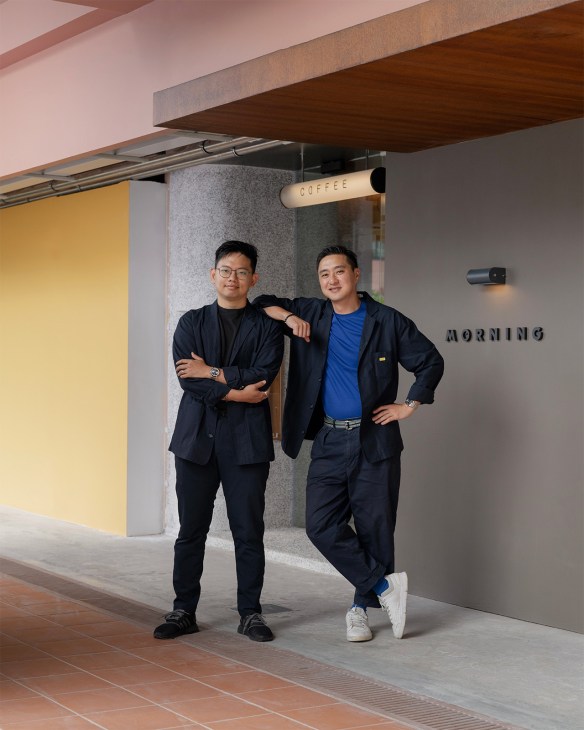
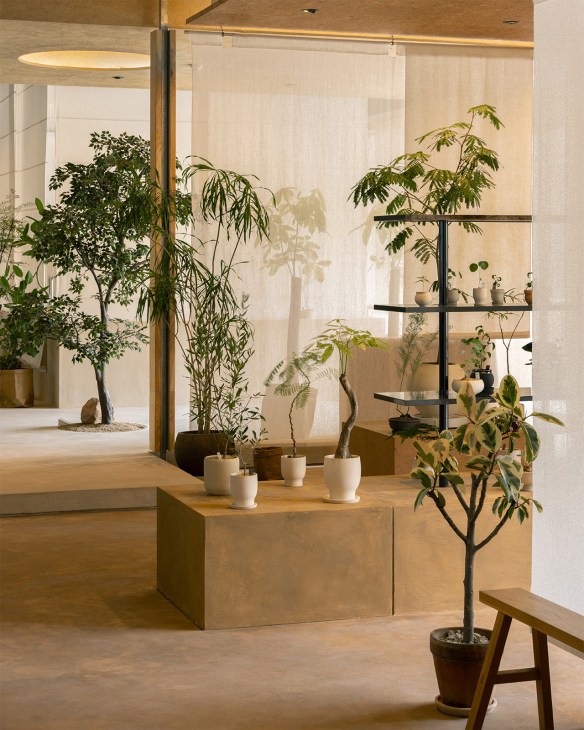
Another school complex that has been regenerated into a lifestyle development is Singapore’s New Bahru. As local hospitality heavyweight The Lo & Behold Group’s most ambitious project yet, it has assembled more than 40 homegrown brands across retail, wellness, hospitality and F&B to create the city-state’s first “creative cluster”. The breadth of talent, from rising fashion label Beyond The Vines to coffee specialist Morning, is The Lo & Behold Group founder Teng Wen Wee’s clarion call that Singapore’s independent businesses are here to stay. Rising against sky-high rents that disfavour start-ups and independent companies, Wee sought to create his mini movement by going big on small businesses. “While showcasing boundary-pushing local brands was always the plan, we’ve managed to go one step further: all our tenants come from Singapore,” he says. By bringing together the island’s best independent businesses in one place, he envisions New Bahru as a greenhouse that will inspire Singaporean ingenuity and ignite meaningful connections. The community’s spirit of collaboration has already taken root: leather artisan Crafune made the menus for restaurant Somma, while womenswear brand Rye designed the staff uniforms for ÁTIPICO | Room #15.
Building thriving communities is also the cornerstone of Bangkok’s lifestyle spaces, The Corner House and Baan Trok Tua Ngork, a mission uncommon among commercially-driven mall developers. “Bangkokians have commonly told us that they don’t have anywhere to go, since all the shopping malls are duplicates of one another,” says The Corner House’s co-founder, Thitipa Sornhiran. Together with her brother Sukrit Sornhiran, they have revived a 100-year-old Sino-Portuguese building in the Talat Noi neighbourhood, which used to house their grandfather’s shoe business, to create an inviting space for residents to gather. Beyond curating a tight selection of restaurants, cafés and retail stores, the duo has dedicated the third storey to “Thailand’s first co-playing cafe”, Such a Small World, which has vinyl listening booths, game pods and a bar. It also hosts regular live-music sessions and events. “Office workers today feel they don’t have good work-life balance, so we’ve set up a place where they can relax and meet new people,” says Sukrit.
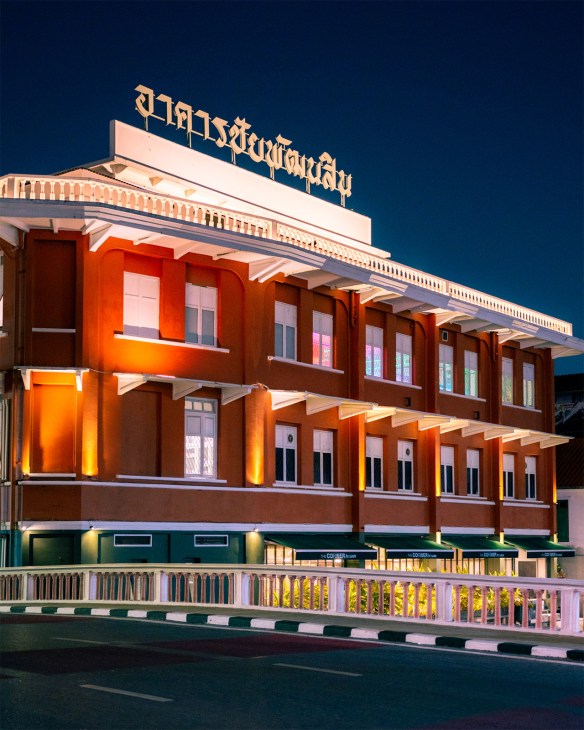
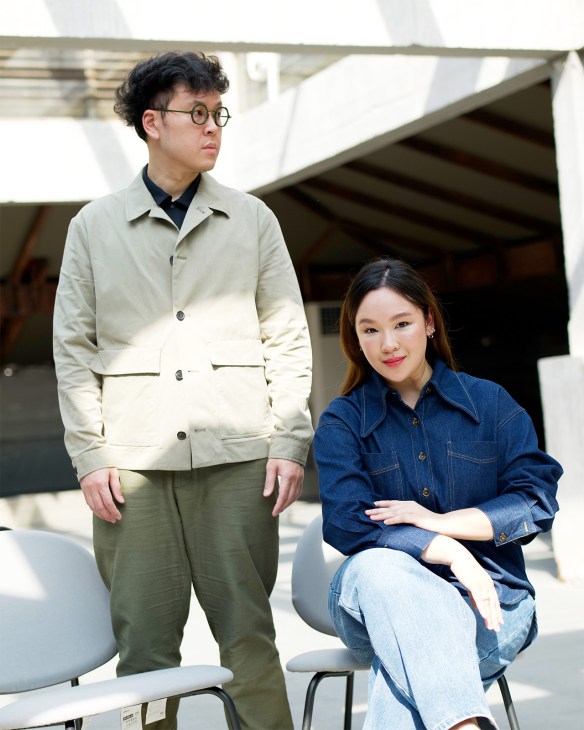
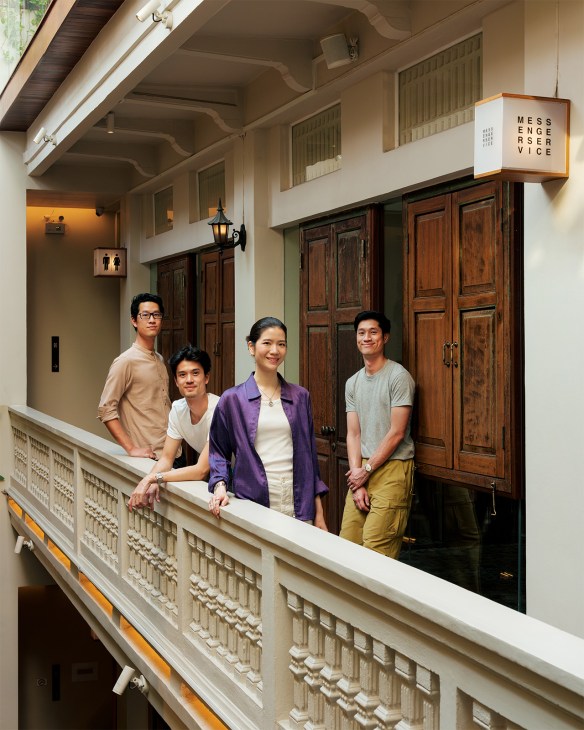

Just a five-minute drive away, Baan Tok Tua Ngork used to be an underutilised ancestral home until the Assakul siblings – Win, Sun, Sandy and Sea – saw how building a creative nucleus would play its part in revitalising their neighbourhood. They thought long and hard about concepts that would bring something original to Chinatown, such as Mexican restaurant Delia and cocktail bar Messenger Service, with the hope that Baan Trok Tua Ngork would be the gateway for others to explore everything else this heritage area has to offer. “Sometimes it’s daunting to explore a place in its traditional form,” says Sun. “You’ll come to Baan Trok but end up discovering many other places, from temples to local food spots. That’s ultimately what we hope this space will set in motion.”
Such care for the community and the city’s creative culture threads through all these Southeast Asian developments – and the difference shows. Neighbourhoods have found a fresh start, and a shared spirit shines forth.
When Romania’s Dan Air announced the launch of flights from the EU to Syria last week, it raised more than a few eyebrows in aviation circles. While technically open, Syrian airspace remains off limits for most European carriers. The memory of Malaysia Airlines Flight MH17, downed over Ukraine in 2014, still lingers as a sobering reminder of what can go wrong when commercial aviation crosses into contested skies. Syria’s civil war might be over but Germany, France, the UK and others continue to prohibit flights in the country’s airspace.
Re-engaging with conflict zones is fraught with difficulty. Beyond the obvious security concerns, flying through or into high-risk regions drives up insurance premiums, exposes airlines to legal and diplomatic entanglements and requires dealing with the growing threat of GPS jamming. Regulatory bodies such as the EU Aviation Safety Agency and the US’s Federal Aviation Administration frequently issue restrictive advisories, rendering operations in such zones both bureaucratically complex and reputationally risky. This, in turn, has opened up a niche for smaller, agile players willing to take calculated risks, such as Dan Air.
Founded in 2017 by Romanian pilot Dan Iuhas, the airline has built its business operating on behalf of larger carriers, such as Transavia, TUI and Wizz Air. In recent years, however, it has shown a growing appetite for complexity. When Romania’s flag carrier, Tarom, suspended flights to Tel Aviv following the 2023 Hamas attacks, Dan Air stepped in to operate more than a dozen rescue flights for EU citizens. The airline also briefly pursued a partnership with Fly Baghdad – blacklisted in the EU – and even offered to support the Iraqi carrier in meeting European regulatory standards. The deal collapsed after Fly Baghdad’s CEO was sanctioned for alleged ties to Iran’s Islamic Revolutionary Guard Corps.
Now the Romanian carrier is turning its focus to Syria. Its CEO, Matt Ian David, says that the decision to offer a connection between the EU and Damascus was driven by the belief that aviation should “connect, not isolate”. Beyond the rhetoric, the numbers are persuasive. Germany is home to nearly 1.3 million people of Syrian origin; Sweden counts a further 250,000. With few efficient alternatives, Dan Air’s services from Berlin, Frankfurt and Stockholm (with a brief stop in Bucharest) promise to cut travel times by as many as 10 hours and serve a community with deep transnational ties. It’s a commercial gamble but a carefully considered one.
Dan Air isn’t the first to return to Syrian skies. Qatar Airways quietly resumed flights to Damascus in January just weeks after Bashar al-Assad fled the country, swiftly followed by Turkish Airlines. But these are not conventional competitors. Qatar Airways is a linchpin of Doha’s soft-power strategy, while Turkish Airlines functions as a diplomatic tool of Ankara, expanding into regions aligned with Turkish foreign interests. Both benefit from access to state-level intelligence and looser regulatory constraints – luxuries that Western carriers generally don’t enjoy.
Romania, it appears, is adopting a similar posture. The new flights were only made possible due to a bilateral agreement between Bucharest and Damascus – more a political signal than commercial formality. By restoring direct air links, Bucharest not only deepens its ties with Syria but also signals a willingness to engage in regional stabilisation, positioning itself as a nimble diplomatic actor in an increasingly multipolar Middle East. The move might yet amplify Romania’s voice in Brussels and offer greater visibility in shaping the EU’s future foreign policy in the region. It’s a model that others should follow.
For Dan Air, the Syria launch is a bold and potentially shrewd move. In a region where connectivity often serves as a shorthand for co-operation, being first counts. By stepping in, Dan Air isn’t merely filling a gap in the market; it’s positioning Romania at the centre of a broader re-engagement with the region. That gives the country not only a commercial advantage but also a soft-power edge. Whether driven by strategic calculation, diplomatic ambition or commercial acumen, Romania’s leap might prove to be more than just a new flight path.
Siebeck is Monocle’s Frankfurt correspondent.



